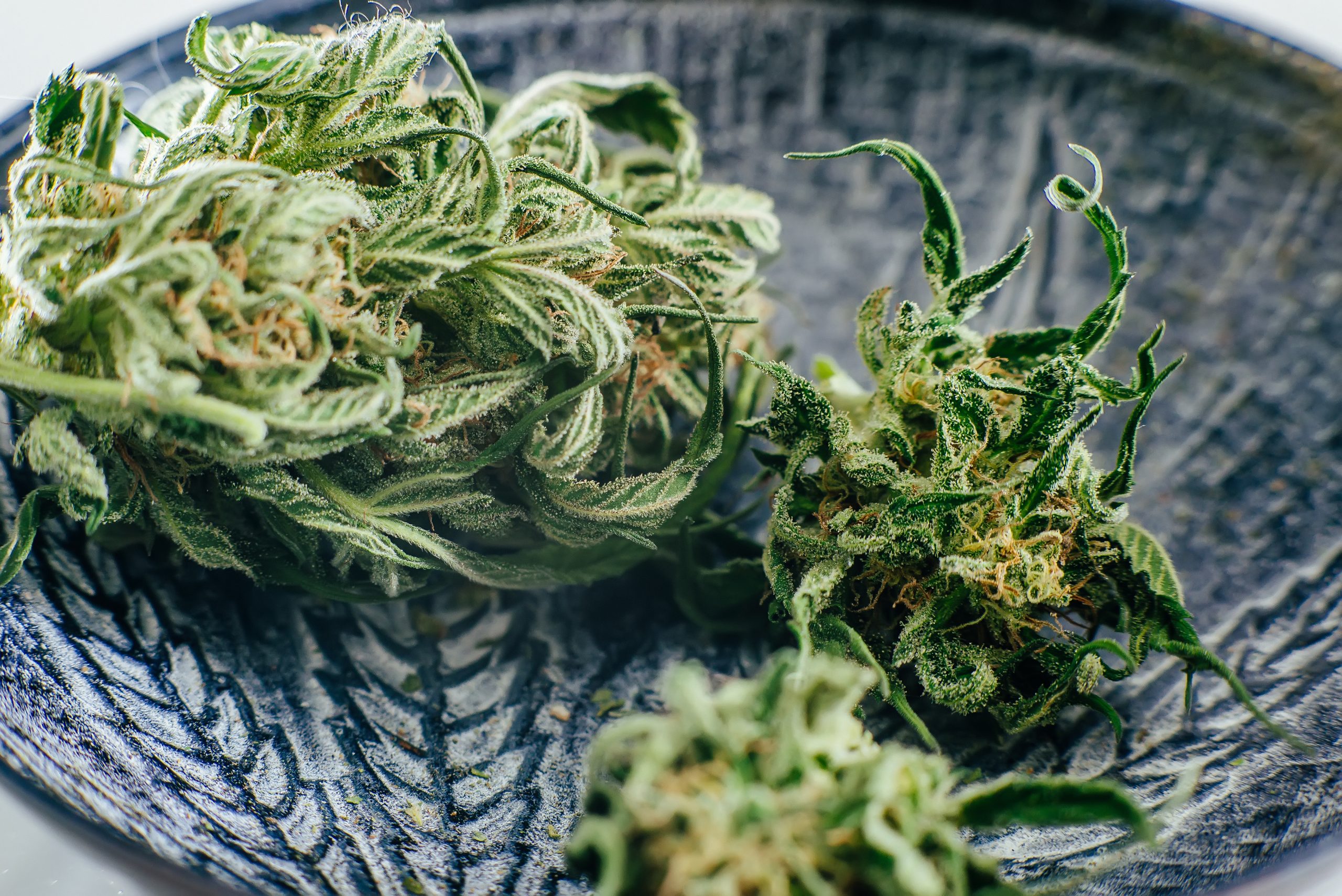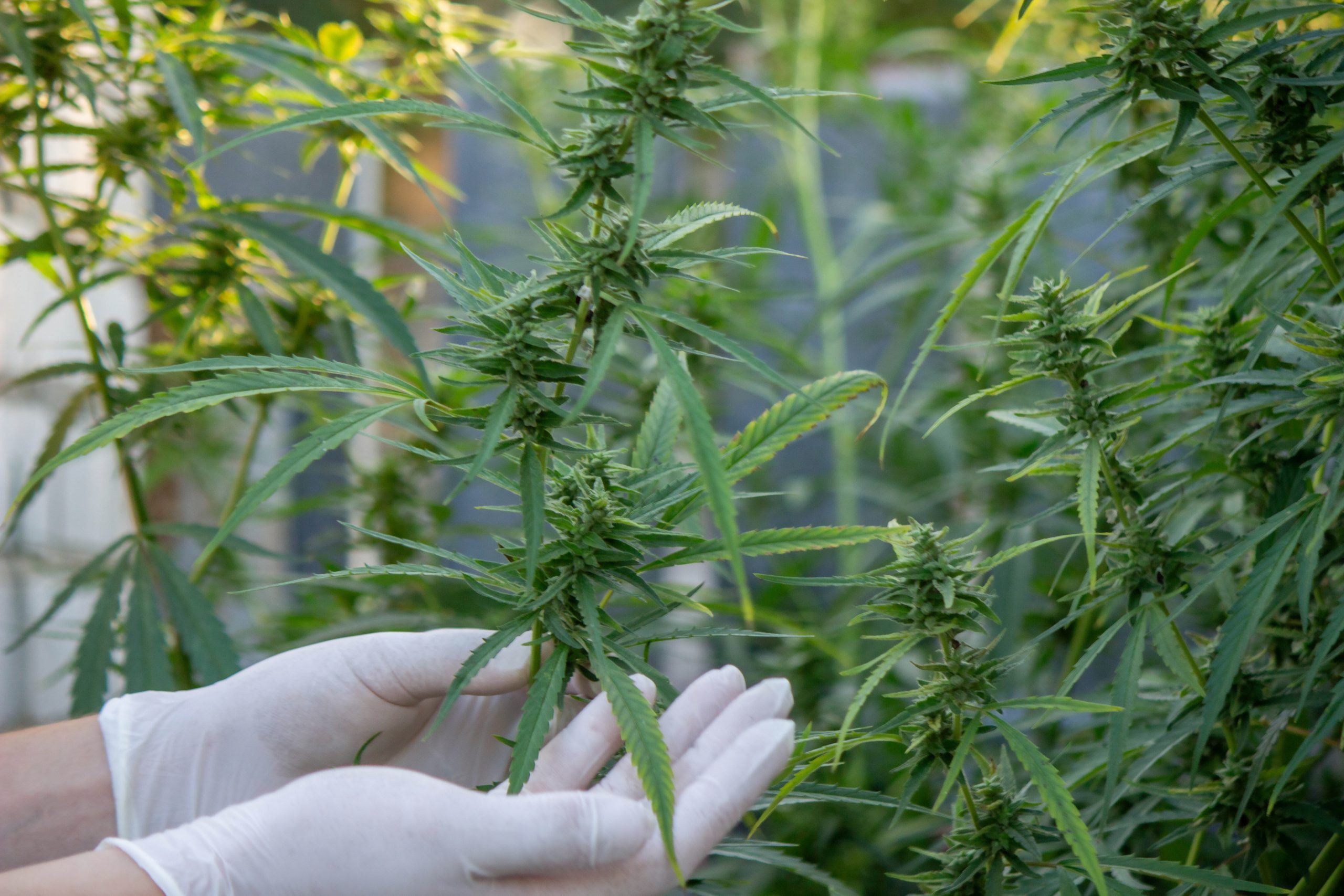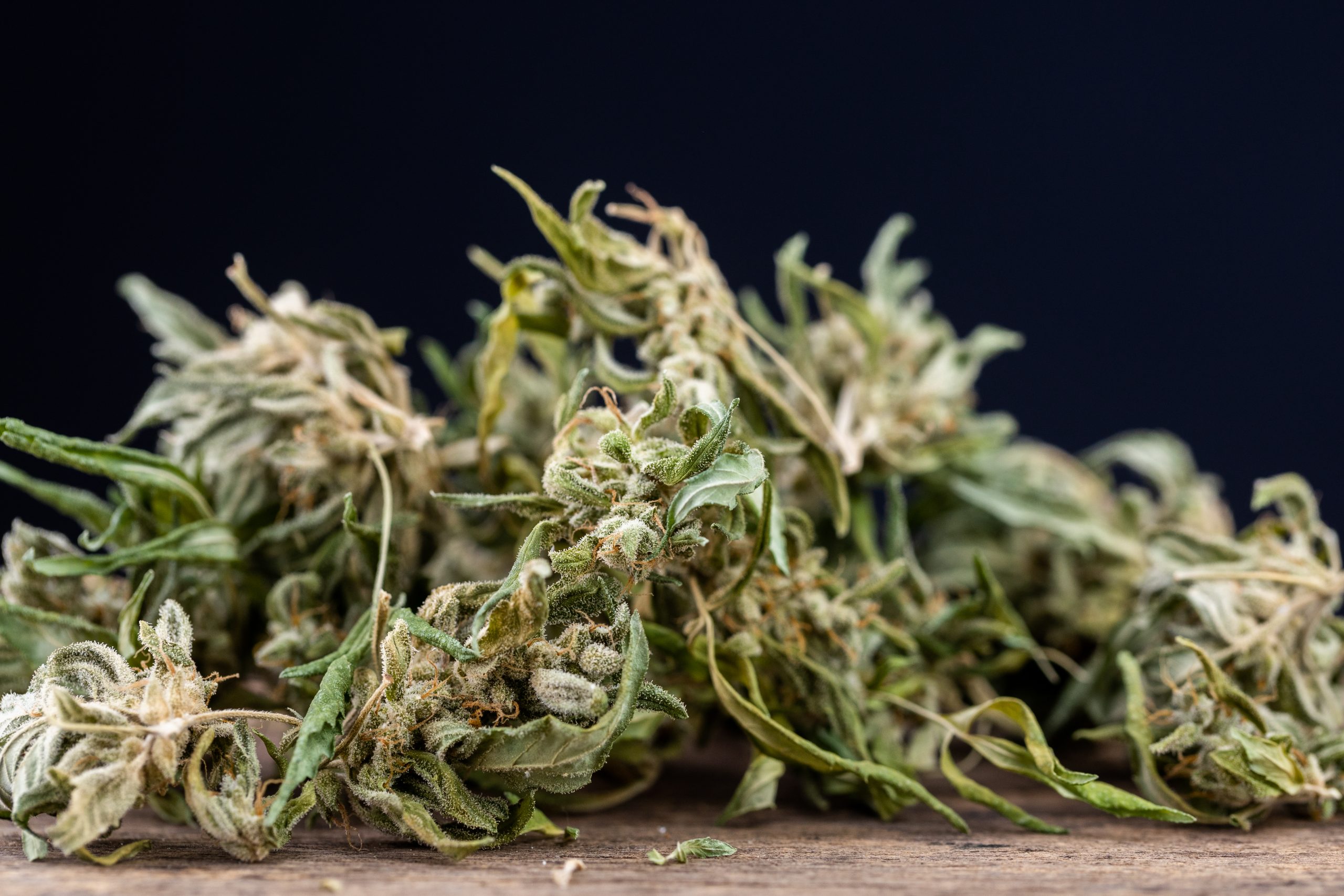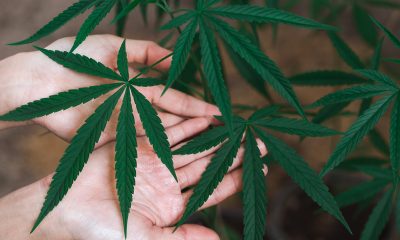Medical Cannabis
The Overlooked Engine of Cannabis: Why Medical Patients Deserve a Return to Center Stage

A Market Built by Patients—But Not Built for Them
Before cannabis became a retail industry, it was a movement powered by patients. The earliest wins in legalization were not driven by branding budgets or recreational hype but by the persistent, courageous advocacy of people living with conditions like epilepsy, PTSD, cancer, chronic pain, and multiple sclerosis.
These were the first stakeholders in cannabis reform. They are the reason cannabis is legal in 38 states in some form. Yet today, in a multi-billion-dollar market fueled by adult-use sales, they’ve become an afterthought.
Dispensary menus now cater primarily to the recreational crowd—shelf after shelf of high-potency flower, flashy branding, and ever-stronger edibles. Meanwhile, the very consumers who brought cannabis into the legal spotlight are struggling to find products that meet their needs, let alone their doctor’s recommendations.
The Disconnect Between Demand and Design
For a patient navigating cannabis therapeutically, today’s market is a maze. Precision dosing, product consistency, and cannabinoid diversity are essential—but in many dispensaries, those features are scarce. Products tailored for specific conditions remain the exception, not the norm.
Instead, the cannabis aisle looks increasingly like a liquor store, with heavy emphasis on potency and buzz. Microdosed formats, full-spectrum low-THC offerings, or condition-specific blends are buried or absent altogether. Patients looking for reliable symptom relief often find themselves either improvising or giving up.
This isn’t just a medical misstep. It’s a market failure.
Where Brands Are Falling Short
The cannabis industry has matured rapidly—but in doing so, it’s lost sight of a core audience. Product development is often driven by hype cycles and trend-chasing, not by patient outcomes. In a market where R&D is still largely underfunded, few companies are investing in clinical validation or partnerships with the healthcare sector.
While recreational consumers may be swayed by clever packaging or viral marketing, medical users need trust, transparency, and therapeutic design. Most dispensary experiences—built for convenience and consumption—fail to deliver on that promise.
And yet, medical patients still show up. They continue to experiment, advocate, and share knowledge through peer networks. Many are spending significant money on cannabis month after month—not for fun, but for functionality.
So why hasn’t the industry caught up?
Medical Cannabis Isn’t a Niche—It’s a Growth Opportunity
It’s a mistake to see medical cannabis as a side market. Consider the numbers:
- Chronic pain affects more than 50 million U.S. adults.
- Insomnia and anxiety disorders collectively impact over 80 million Americans.
- Neurodegenerative conditions, autoimmune disorders, and women’s health concerns are increasingly being managed with cannabis as complementary care.
Add to this the growing interest in cannabis among caregivers, geriatric patients, and those seeking alternatives to opioids or benzodiazepines, and the scale of this segment becomes impossible to ignore.
The industry doesn’t need to choose between recreational and medical markets—but it does need to recognize that it has undervalued one of its most consistent, loyal, and underserved demographics.
How the Industry Can Realign
To win the medical cannabis market—and serve patients in a meaningful way—brands need to reimagine product development from the ground up. Here’s where that begins:
1. Go Beyond Ratios
The standard 1:1 or 10:1 THC:CBD ratios are a blunt tool for nuanced needs. Products need to reflect the complexities of conditions they aim to support—whether it’s nerve pain, inflammation, or menopause. Tailored cannabinoid and terpene profiles are key.
2. Standardize Dosage Formats
Medical users want predictability. That means clear dosing, consistent batch results, and reliable onset/duration data. Whether through capsules, tinctures, or sublinguals, the medical side demands pharmaceutical-grade consistency.
3. Partner with Healthcare Providers
Patients turn to cannabis when conventional therapies fall short—but most doctors remain skeptical due to lack of data. Brands that partner with clinicians, build educational platforms, and publish real-world evidence can build vital bridges.
4. Invest in Clinical Validation
Small-scale trials, case studies, and patient-reported outcomes can go a long way. Not every product needs FDA approval, but evidence-based design will set companies apart and open the door to formulary acceptance, insurance interest, and long-term trust.
5. Reimagine the Retail Experience
Patients don’t want to buy their medicine from a neon-lit lounge. Dedicated service counters, trained medical consultants, and patient-focused packaging are essential to making dispensaries more accessible and affirming for therapeutic users.
A Moment of Reckoning—And Opportunity
The cannabis industry is entering a pivotal phase. As the recreational market matures and consolidates, brands are seeking differentiation and sustainable growth. The medical market offers both—but it requires a deeper commitment.
For those willing to build for patients, not just consumers, the reward is twofold: meaningful impact and market leadership.
This isn’t about going backwards. It’s about recognizing where the industry began, and where its most resilient growth can still be found.
Patients built this market. It’s time the market started building for them.
Legalization And Regulations
Hawaii Moves to Expand Medical Cannabis Access with Landmark Bill

Hawaii is poised to make one of its most significant moves in medical cannabis reform in over two decades. While adult-use legalization has repeatedly stalled in the state legislature, lawmakers are now advancing a bill that could dramatically expand medical cannabis access—potentially positioning Hawaii as one of the most inclusive medical markets in the country.
House Bill 302, recently adopted by the state Senate, proposes a sweeping update to Hawaii’s medical cannabis framework. The legislation broadens the definition of qualifying conditions, streamlines patient access, updates cultivation licensing rules, and enhances operational flexibility for dispensaries. If enacted, the changes could reverse a trend of declining patient enrollment while offering a new model for medically focused cannabis policy in conservative-leaning markets.
From Restricted Access to Physician-Guided Care
One of the bill’s most transformative provisions is the removal of Hawaii’s fixed list of qualifying medical conditions. Instead, the state would defer to a healthcare provider’s professional judgment, allowing them to recommend medical cannabis for any condition they deem appropriate. This change would align Hawaii’s medical program with a more personalized approach, where decisions are made collaboratively between patients and licensed clinicians.
This proposed shift comes amid mounting concerns that Hawaii’s existing regulatory barriers have discouraged participation in the medical cannabis system. Patient enrollment peaked in 2021, but has since declined by over 15%. Advocates argue that overly strict qualification standards and limited access to recommending physicians have driven many residents toward unregulated sources—or away from cannabis entirely.
By empowering more clinicians, including nurse practitioners, and allowing telehealth certifications without in-person consultations, H.B. 302 aims to remove friction points that have historically deterred eligible patients.
Expanding Licenses—A Point of Tension
The bill also opens the door for additional medical cannabis cultivation licenses, including specific parameters for indoor and outdoor canopy sizes. While the goal is to strengthen supply chains and reduce dependence on existing production centers, some industry stakeholders have voiced concern that the market is already oversupplied.
According to testimony from licensed operators, current production infrastructure is underutilized, and additional cultivation licenses could oversaturate the legal market, potentially driving more product into illicit channels. While the bill does include safeguards—such as penalties for unlicensed dispensary operations and restrictions on unregulated advertising—the cultivation expansion remains a polarizing point.
Additional Operational Updates
Beyond patient and licensing reforms, H.B. 302 includes several practical updates for dispensary operations, including:
- Allowing licensed dispensaries to sell non-cannabis items in waiting areas, such as hemp products and accessories.
- Clarifying rules for dispensary-to-dispensary transfers, which could enhance product availability across islands.
- Supporting telehealth authorizations, provided they originate from within the state.
Together, these provisions signal an intent to modernize Hawaii’s medical cannabis system while balancing patient access, regulatory integrity, and market stability.
A Strategic Pivot After Adult-Use Setbacks
This legislation arrives in the wake of another failed attempt to pass adult-use legalization in Hawaii. Earlier this year, lawmakers tabled a recreational cannabis bill for the second consecutive session, citing limited political support and persistent concerns from law enforcement and public health stakeholders.
However, this medical expansion appears to serve as a calculated middle ground—one that addresses public demand for broader cannabis access without fully embracing a recreational model. It allows the state to extend legal protections to more residents, ease pressure on illicit markets, and preserve regulatory oversight within a medical framework.
Importantly, the new approach also mirrors existing Hawaii policies that support patient autonomy in other sensitive healthcare decisions—such as end-of-life care and reproductive health. Framing medical cannabis access as a personal healthcare right rather than a commercial opportunity may prove more palatable for moderate lawmakers and voters.
What Comes Next
With the Senate approving the amended bill by a wide margin, the legislation is now headed back to the House for concurrence. If the lower chamber agrees to the revisions, the bill will move to the desk of Governor Josh Green, a physician and long-standing advocate for cannabis policy reform.
While Governor Green has publicly expressed frustration with the pace of adult-use progress, he has also championed broader medical access as a logical next step. If signed into law, H.B. 302 could take effect within months, potentially reshaping the medical cannabis landscape in Hawaii before the end of 2025.
Final Thoughts
Hawaii’s medical cannabis expansion reflects a broader trend seen in other slow-moving legalization states: when full recreational reform proves elusive, legislators pivot to enhancing medical programs as a bridge. The passage of H.B. 302 may not represent the adult-use breakthrough many hoped for, but it does signify a renewed commitment to patients, providers, and pragmatic cannabis policy.
By expanding access, streamlining certifications, and enabling operational growth, Hawaii is taking a significant step forward—even if the path to full legalization remains a longer journey.
Health And Wellness
Four in Ten Veterans with Chronic Pain Turn to Cannabis for Relief, Study Finds

A newly published study sheds light on the growing role of cannabis in chronic pain management among military veterans, revealing that 40 percent of surveyed veterans with persistent pain report using cannabis to manage their symptoms. The research, conducted by scientists at the University of California, San Francisco, and Yale University, offers further insight into how veterans are integrating cannabinoids into their healthcare routines—often in combination with or as alternatives to prescription medications.
The study appears in the journal Global Advances in Integrative Medicine and Health and adds to a growing body of literature showing increased interest in plant-based treatments among patient populations with complex pain and mental health needs.
Chronic Pain Among Veterans: A Widespread Health Challenge
Chronic pain is one of the most common and debilitating conditions among U.S. military veterans. It can result from combat injuries, degenerative conditions, and long-term physical strain endured during service. For decades, pain management has relied heavily on pharmaceuticals—including opioids, NSAIDs, and sleep medications—all of which carry risk of side effects, dependency, or reduced efficacy over time.
In this study, researchers surveyed 52 veterans enrolled in primary care at Veterans Health Administration (VA) clinics. All participants had been diagnosed with chronic pain, and many also reported associated mental health conditions such as post-traumatic stress disorder (PTSD), anxiety, and depression.
Despite the small sample size, the findings revealed significant trends: nearly all participants expressed a desire for healthcare providers to discuss natural product use more openly, with 98 percent believing that these options should be part of routine clinical care.
Cannabis as a Natural Therapy: Key Findings
Among the survey’s respondents, cannabis was the third most common natural product used, following vitamin D and multivitamins. A breakdown of the reasons why veterans used cannabis offers a more detailed picture of its perceived therapeutic value:
- 81% used it for pain or mobility issues
- 62% cited sleep improvement
- 43% reported relief from PTSD or anxiety
- 43% used it to manage stress
- 29% indicated it helped with depression
Participants tended to favor cannabinoid products that contained both CBD and THC, suggesting a preference for full-spectrum formulations that combine non-intoxicating and psychoactive compounds for broader therapeutic effects.
The authors noted that many respondents used cannabis in tandem with other natural products—sometimes as a substitute for prescribed pharmaceuticals—further illustrating a shift toward personalized, integrative approaches to health management.
Barriers to Communication in the VA System
Despite widespread use, only about half of veterans in the study reported discussing natural product use with their healthcare providers. This hesitancy is attributed in part to federal policy that prohibits VA physicians from recommending or prescribing cannabis, even in states where it is legal.
The lack of formal guidelines within the VA, along with federal cannabis prohibition, has left many clinicians without adequate training or confidence to engage in conversations around medical marijuana. This disconnect may result in veterans relying on outside sources for cannabis advice—potentially exposing them to misinformation, low-quality products, or harmful drug interactions.
The study’s authors emphasized that while many natural products are generally safe, some may be mislabeled or contaminated, and interactions with prescription medications are not well understood—particularly for patients taking multiple drugs for pain, sleep, and mental health.
Advocacy and Legislative Momentum
The findings arrive at a time of renewed momentum for veterans’ cannabis access legislation at the federal level. Bipartisan bills such as the Veterans Equal Access Act and the Marijuana Safe Harbor Act are being championed in Congress to allow VA doctors to recommend medical cannabis in states where it is legal. If passed, these measures would enable veterans to receive plant-based therapies through formal healthcare channels for the first time.
Veterans advocacy groups—including Iraq and Afghanistan Veterans of America (IAVA)—have called on lawmakers to end the disparity between civilian and veteran access to medical cannabis. At recent congressional hearings, several veterans service organizations voiced support for expanding therapeutic options, including cannabis and psychedelics.
Cannabis and Chronic Pain: An Expanding Evidence Base
Beyond veteran populations, recent scientific research continues to validate cannabis as a potential tool for managing chronic pain. A number of peer-reviewed studies published in the last two years highlight cannabis’s ability to alleviate symptoms across a range of pain types, including:
- Neuropathic pain
- Musculoskeletal disorders
- Cancer-related pain
- Migraine and chronic headache
Many of these studies also point to reduced use of opioids and other medications following cannabis adoption. In a large-scale review by researchers at Penn State College of Medicine, cannabinoids were found to be effective in treating various forms of chronic pain—with some cannabinoid blends reducing the psychoactive impact of THC while maintaining therapeutic benefits.
Meanwhile, a separate study comparing medical cannabis to prescription drugs for pain concluded that cannabis was more effective or at least equally effective, with fewer patients discontinuing treatment due to side effects.
Substitution and Safety
Multiple analyses suggest a consistent trend: legal access to cannabis is associated with declines in opioid prescriptions, overdose deaths, and pharmaceutical dependence. In states that have legalized adult-use or medical marijuana, researchers have observed:
- Lower rates of opioid prescriptions
- Fewer opioid-related deaths
- Decreased hospitalizations for pain-related conditions
- Improved self-reported quality of life among chronic pain patients
These findings provide a compelling case for integrating cannabis into broader pain management protocols, particularly in populations like veterans, where traditional therapies have often fallen short or introduced additional health risks.
State-Level Examples and Broader Impacts
States like Minnesota and Utah have produced their own data through patient registries and surveys. Minnesota’s Department of Health, for instance, released a report showing that veterans and chronic pain patients enrolled in its medical cannabis program reported noticeable improvements in pain levels and reductions in reliance on other medications.
Other state-level data points echo similar patterns: cannabis access often corresponds to measurable decreases in opioid use and overdose fatalities. These outcomes are prompting a reevaluation of pain treatment strategies, particularly in the wake of the opioid crisis and its lingering impact on veteran communities.
Looking Forward: Expanding Access and Education
The latest study reinforces a critical need for open dialogue between veterans and healthcare providers around cannabis and other natural products. As medical research evolves and public policy shifts, it is becoming increasingly clear that cannabis has a role to play in pain management, mental health support, and sleep regulation—especially for individuals with service-related health conditions.
For this potential to be fully realized, however, regulatory alignment, provider education, and clinical research infrastructure must evolve alongside patient demand. Until then, many veterans may continue navigating cannabis therapy without formal medical guidance, relying instead on anecdotal evidence and informal networks.
The path forward will require collaboration between lawmakers, medical professionals, and veterans themselves to reshape how cannabis is discussed, prescribed, and integrated into holistic care models.
Medical Cannabis
Medical Cannabis Shows Promise in Addiction Recovery

A new era in substance use recovery may be emerging, as medical cannabis gains traction as a supportive tool for individuals managing opioid dependence and other substance use disorders. A recent Canadian pilot study from researchers at UBC Okanagan and Thompson Rivers University is shedding light on how supervised cannabis use within recovery homes can provide relief from the psychological and physical challenges that often threaten the success of recovery.
This innovative approach—grounded in harm reduction and patient-centered care—explores how cannabis may offer a therapeutic alternative to traditional pharmaceuticals, while also addressing long-standing stigma within healthcare settings.
A Groundbreaking Study in Residential Recovery Settings
The study, published in the Journal of Studies on Alcohol and Drugs, assessed the outcomes of medically supervised cannabis use in a residential recovery home located in British Columbia’s interior. Researchers observed the experiences of patients undergoing treatment for substance use, particularly those managing chronic pain, anxiety, depression, and sleep disorders—symptoms that commonly emerge during withdrawal or early sobriety and can often lead to relapse.
Through qualitative interviews and health assessments, participants consistently reported that cannabis helped reduce cravings for opioids, managed withdrawal-related discomfort, and improved overall mental well-being. These reported outcomes suggest that cannabis may serve as an adjunct therapy in structured recovery environments.
Key Findings: From Symptom Management to Relapse Prevention
Participants in the study shared that cannabis played a meaningful role in mitigating both physical and emotional stressors that had previously disrupted their recovery journeys. The most frequently cited benefits included:
- Reduced cravings for opioids and other addictive substances
- Improved pain management without the need for prescription opioids
- Decreased anxiety and depressive symptoms, supporting emotional regulation
- Improved sleep quality, which is critical to long-term recovery
- Increased program retention, with some participants citing cannabis as a reason they stayed in treatment
While the study is preliminary, its results are aligned with a growing body of literature suggesting that cannabis—particularly when administered in a supervised, clinical setting—may reduce the risk of relapse and help patients navigate early recovery with greater stability.
Stigma and Resistance Among Staff Remain Barriers
Despite the positive feedback from participants, the research also revealed that stigma surrounding cannabis use persists, particularly among some staff members in the recovery setting. This cultural resistance often stems from historical misunderstandings of cannabis as purely recreational or harmful, rather than medicinal or therapeutic.
Interviews with staff at the participating facility highlighted a need for targeted education and training. Many expressed discomfort or skepticism regarding cannabis integration, often due to a lack of formal education on its clinical applications. This skepticism can create an environment in which patients feel judged or unsupported, undermining the potential benefits of supervised cannabis use.
Researchers emphasized that to implement cannabis effectively within addiction care models, recovery programs must address institutional stigma and equip staff with the tools needed to engage with cannabis as a legitimate medical option.
A Holistic Approach to Harm Reduction
Medical cannabis use in addiction recovery aligns with broader harm reduction strategies increasingly embraced across North America. Rather than insisting on rigid abstinence-only models, this approach recognizes the reality that many patients benefit from incremental, individualized treatment plans.
By replacing more harmful substances—such as illicit opioids or alcohol—with cannabis, patients may be better positioned to achieve stability, reduce risky behaviors, and engage in other therapeutic practices like counseling, support groups, or vocational training.
In this context, cannabis functions not as a cure or final step, but as a transitional aid that supports progress in a long and often nonlinear journey toward wellness.
Inside the Study: Maverick Supportive Recovery
The pilot project was conducted at Maverick Supportive Recovery, a residential treatment center located in British Columbia. These types of facilities offer structured, live-in programs designed to help individuals stabilize, detoxify, and develop coping strategies for long-term sobriety.
Researchers selected this setting to evaluate how cannabis could be integrated into a residential program with 24/7 support, and to determine what systemic and cultural changes might be necessary for broader implementation. The choice of a supportive recovery environment ensured that cannabis use was monitored, documented, and contextualized within a therapeutic framework.
The team behind the study included academics in psychology, nursing, and public health, signaling a multidisciplinary interest in evolving the role of cannabis in clinical care.
Education Is the Next Step
Researchers behind the pilot are advocating for wider-scale studies to explore how cannabis can be safely and effectively introduced into recovery programs across Canada and internationally. However, they also recognize that cultural change is as crucial as clinical validation.
To that end, the study calls for:
- Staff education initiatives to improve understanding of cannabis pharmacology
- Patient-centered care models that allow for personalized treatment plans
- Policy reviews that address regulatory inconsistencies around cannabis use in recovery settings
Upcoming educational events, such as the Medical Cannabis and Recovery forum on April 26, 2025, aim to bring together researchers, clinicians, and the public to discuss the implications of this emerging therapeutic approach.
Future Implications for Substance Use Treatment
If validated through further research, cannabis integration in recovery could:
- Diversify treatment options for individuals who have not succeeded in abstinence-only programs
- Reduce reliance on pharmaceutical interventions, including synthetic opioids and sedatives
- Improve retention rates in recovery programs, which are often plagued by early dropout
By expanding the therapeutic toolkit available to providers and patients alike, cannabis could represent a paradigm shift in addiction medicine, one that prioritizes compassion, pragmatism, and patient autonomy.
Final Thoughts
The Canadian pilot study on medically supervised cannabis in recovery homes offers compelling evidence that cannabis may serve as a supportive tool for individuals managing substance use disorders. While challenges around stigma and implementation remain, the results point toward a future where cannabis could complement, not compete with, traditional recovery approaches.
As medical systems explore new ways to address the opioid crisis and evolving patterns of addiction, evidence-based cannabis therapy may provide a bridge between clinical efficacy and compassionate care—giving patients more pathways toward healing, stability, and long-term success.
-

 Legalization And Regulations6 months ago
Legalization And Regulations6 months agoRhode Island Finalizes Cannabis Regulations Ahead of Full Market Transition
-

 Legalization And Regulations6 months ago
Legalization And Regulations6 months agoFlorida’s Amendment 3 Fails: Recreational Marijuana Legalization Rejected Despite Trump’s Support
-

 Cannabis Product Reviews6 months ago
Cannabis Product Reviews6 months agoDr. Greenthumb’s x G Pen: A Compact Vaporizer With Big Style and Even Bigger Performance
-

 Cannabis Industry News7 months ago
Cannabis Industry News7 months agoLeadership Shakeup in NYC Sparks Questions About the Future of Urban Cannabis Programs
-

 Dispensaries5 months ago
Dispensaries5 months ago3 Dispensaries in New Mexico That Are Revolutionizing the Scene
-

 Cannabis Industry News7 months ago
Cannabis Industry News7 months agoTariffs and the Cannabis Supply Chain: How U.S. Businesses Are Adapting to Economic Headwinds
-

 Cannabis Product Reviews7 months ago
Cannabis Product Reviews7 months agoExploring the Entourage Effect: A Closer Look at The Terpene Store’s Natural Products Sample Pack
-

 Dispensaries6 months ago
Dispensaries6 months agoTop 3 Trendsetting Dispensaries in Michigan for 2025








